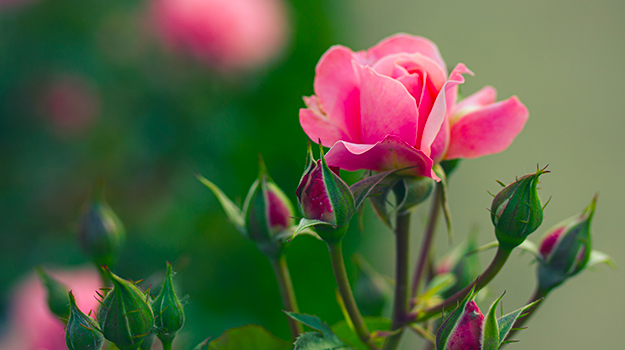
As with most shrubs, the objective is to ensure your plant’s vigour while giving it a nice, balanced shape. Removing dead wood, allowing air to get through the branches, rejuvenating your plant, making the branches sturdier, ensuring abundant flowering… These are also good reasons to prune your roses!
Except for hardy roses, which almost never need pruning. It’s one of the things that make their charm! Obviously, you can do maintenance pruning in the spring, but if you don’t, your roses won’t hold it against you.
Here’s a guide to know when and how to prune roses when needed.
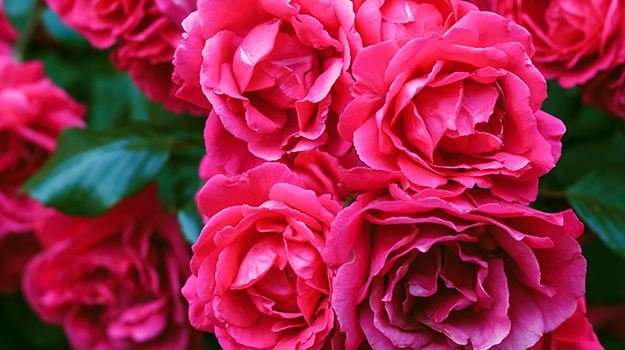
Pruning when planting
We sometimes fall for a rose that’s not so sturdy at the garden centre. By cutting back the stems at planting, you’ll stimulate the formation of vigorous branches.
The pruning technique will vary depending on the type of rose.
- For hybrid tea, floribunda and grandiflora roses, keep 3 to 5 vigorous grafted stems, arranging them in the shape of a cup. Do not keep more than 4 eyes (buds) on each stem.
- For shrub roses, only if needed, cut back all stems 50 cm from the ground to facilitate planting or balance your plant.
- In all cases, cut broken or damaged stems cleanly to prevent diseases.
OUR TIP: Always cut 5 mm above an outward-pointing bud. By cutting too close, you risk damaging the bud, and too far, you increase the risk of diseases. Make a clean cut with a sharp tool. Between each cut, disinfect the blades of your tool with 70% alcohol (rubbing alcohol) to prevent the possible spread of diseases.
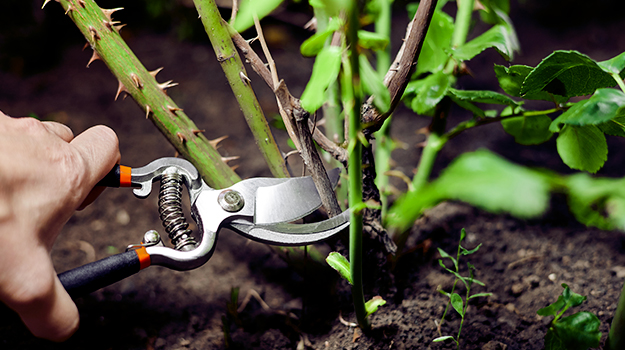
When to prune roses in the spring
Spring pruning is done early in the season, ideally before the buds open. This annual maintenance pruning is the most important. It mainly consists in removing dead wood and pruning branches that have been damaged or have frozen (blackened wood) during the winter.
You can also prune one third of the older branches (rejuvenation pruning), and the branches that rub against each other, which could injure the plant. For a rose that is sensitive to diseases and insects, any injury represents a risk that needs to be eliminated. This operation will also allow air and light to penetrate the centre of the plant, which will protect it from fungal diseases.
Eliminate the suckers that emerge from the roots or that grow under the grafting point. A cultivar that has nothing in common with the one you planted could appear from these shoots, as they come from the rootstock.
OUR TIP: You can take cuttings from suckers to multiply your plant. If your rose is a cutting, you will get the exact same thing. If it was grafted, you could get a whole new cultivar with minimal effort!
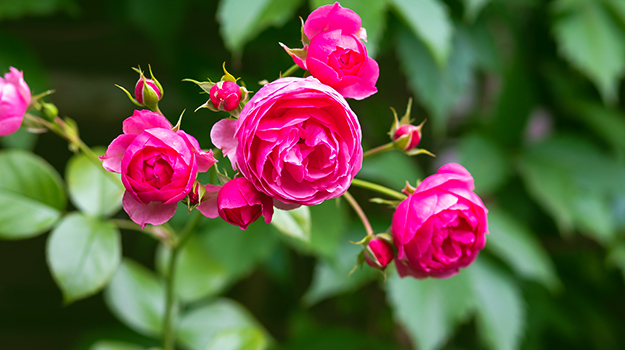
When to prune everblooming roses
A rose is said to be everblooming when it blooms several times during the same season, or when its flowering is uninterrupted from June to October. The pruning of everblooming roses is done early in the spring, before budbreak. Again, hardy roses do not need pruning.
In the case of hybrid tea, floribunda or grandiflora roses, cutting off spent flowers will encourage the formation of new flower buds. Do not prune during summer to avoid stimulating the development of new stems that won’t be strong enough to survive winter.
When to prune once-flowering roses
Once-flowering roses, as their name suggests, bloom only once during the season, generally in June. As for pruning, they are an exception to the rule because they must be pruned in summer, once they’re finished flowering.
Pruning them in the spring would compromise flowering as you would remove soon-to-break buds. Early in the season, simply remove blackened, diseased or damaged wood. Rejuvenation pruning is also possible in the spring, provided you’re willing to give up some of the flowering.
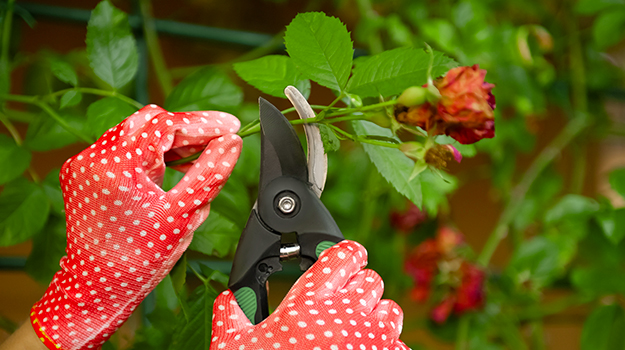
Pruning roses in summer
In summer, simply remove spent flowers from hybrid tea, floribunda and grandiflora roses to stimulate flowering. Cut above the first or second leaf with 5 leaflets (a leaf with 5 parts instead of 3).
No need to prune a hardy rose. Obviously, you can remove spent flowers, but leaving them won’t impact its abundant flowering. Know that cutting off the spent flowers will prevent the production of beautiful orange-red fruits. These attract birds to the garden and provide a beautiful sight once the fall colours have faded.
Starting in July, avoid severe pruning as it stimulates the growth of the plant. The young shoots would not have the time to develop enough vigour to survive winter.
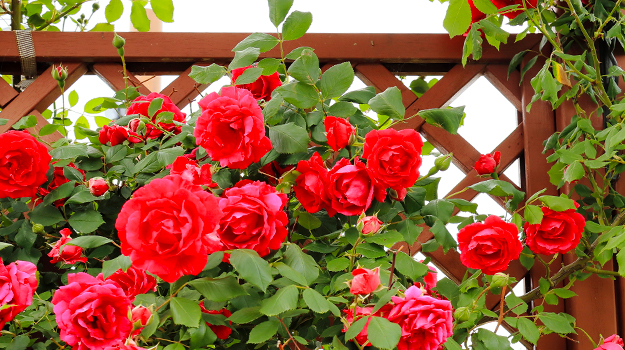
How to prune climbing roses
In the case of everblooming climbing roses, pruning is done early in the season. Remove dead, dried out, blackened or diseased wood first, as you would with any rose. Then remove the older branches that will bloom less to make room for the younger ones. Pruning your climbing rose each year will keep it looking young and always at its best.
Then, keep 5 or 6 branches among the most vigorous and cut the side branches to 20 or 30 cm from their base. These branches will make up the plant’s frame and can be trained to grow horizontally.
For once-flowering climbing roses, you can do the exact same thing, but only once they have flowered. Finally, for hardy climbing roses, no pruning is required. If necessary, hanging branches can be trellised. On the whole, they will develop naturally without the slightest care being given to them. They can even spend the winter on their trellis!
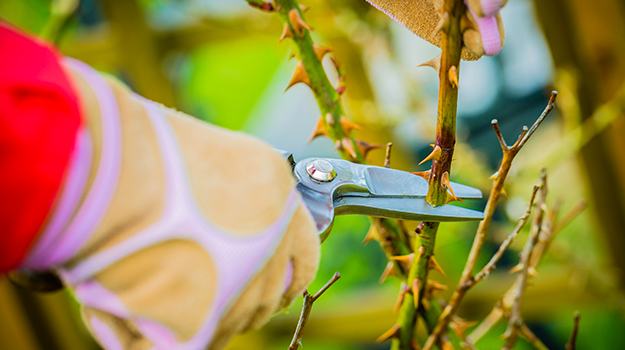
When to prune old roses
When a rose reaches a certain age, it can show signs of fatigue such as the emergence of small, frail stems at its base, which won’t develop much.
Some roses can live for several decades. Although it is not certain that the source is reliable, the oldest rose is said to be over 125 years old. Most of the time, the symptoms associated with old age are actually related to poor soil (which is even more exhausted than your plant), or too severe or too frequent pruning.
Fortunately, rejuvenation pruning can help your old rose bounce back. It must be done in the spring using sharp tools. Here’s how:
- Remove all frail stems.
- Eliminate the branches that have become knotty from being pruned, or that are badly oriented.
- Save 3 or 4 stems among the newest ones (they will be smaller, but still vigorous, their wood will be very green), and cut them 5 mm above the fourth or fifth bud pointing outwards.
- Enrich the soil with compost. Work it into the soil by digging on the surface, to avoid damaging the roots. Do not use nitrogen-rich fertilizers. At this point, it could kill your rose.
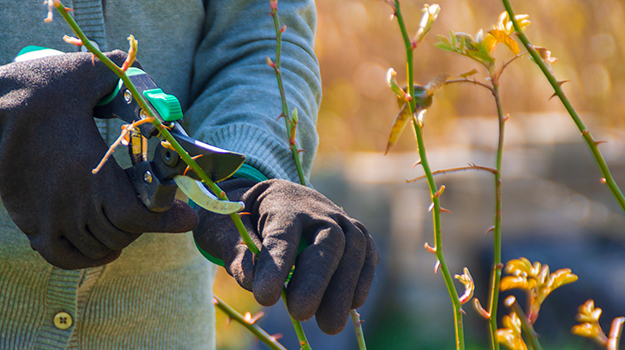
When to prune roses in the fall
Unless you need to move a big plant, pruning roses in the fall is useless. However, you can do some light pruning to install winter protection if necessary. Otherwise, it is better to wait until the following spring!
